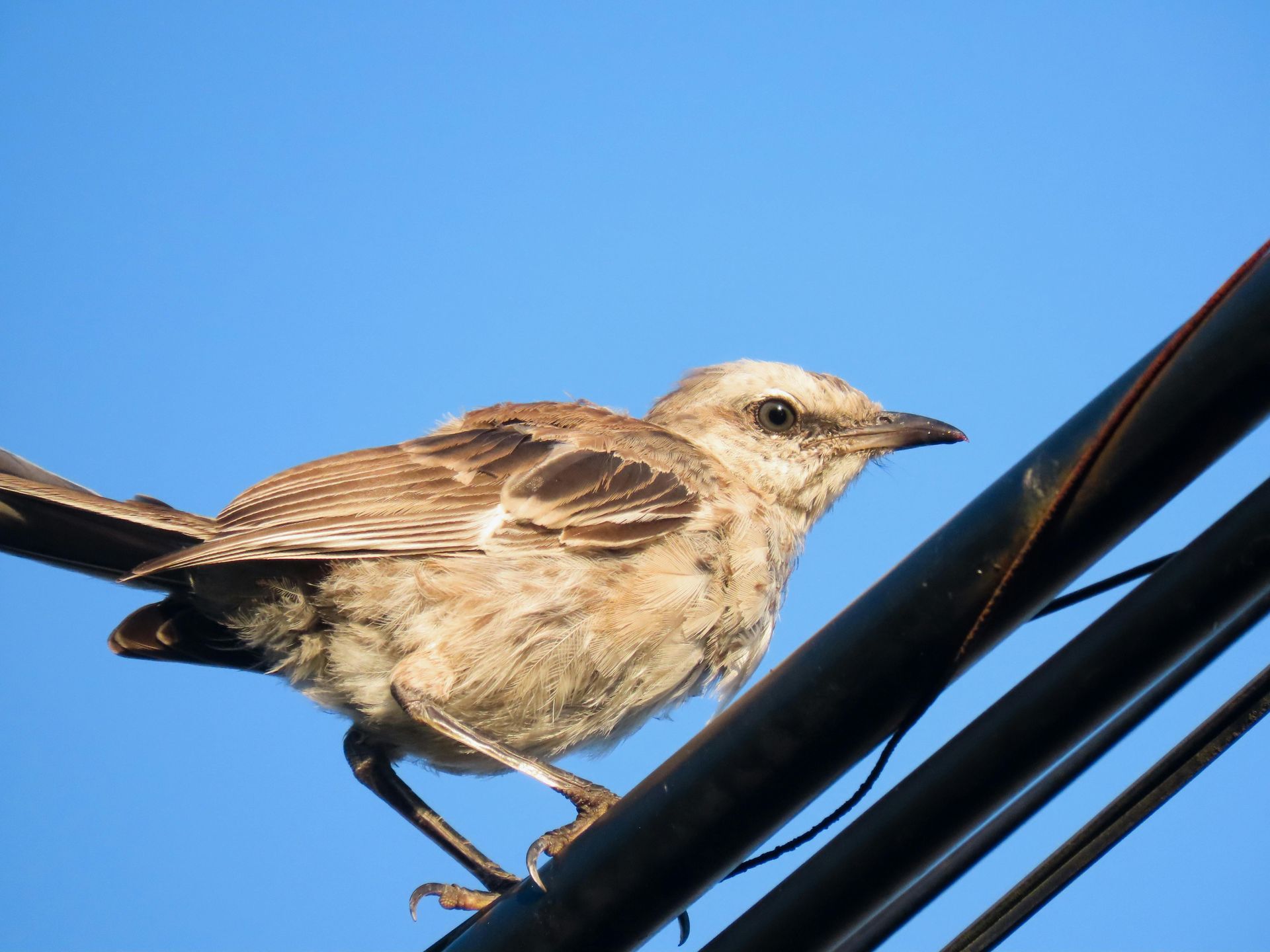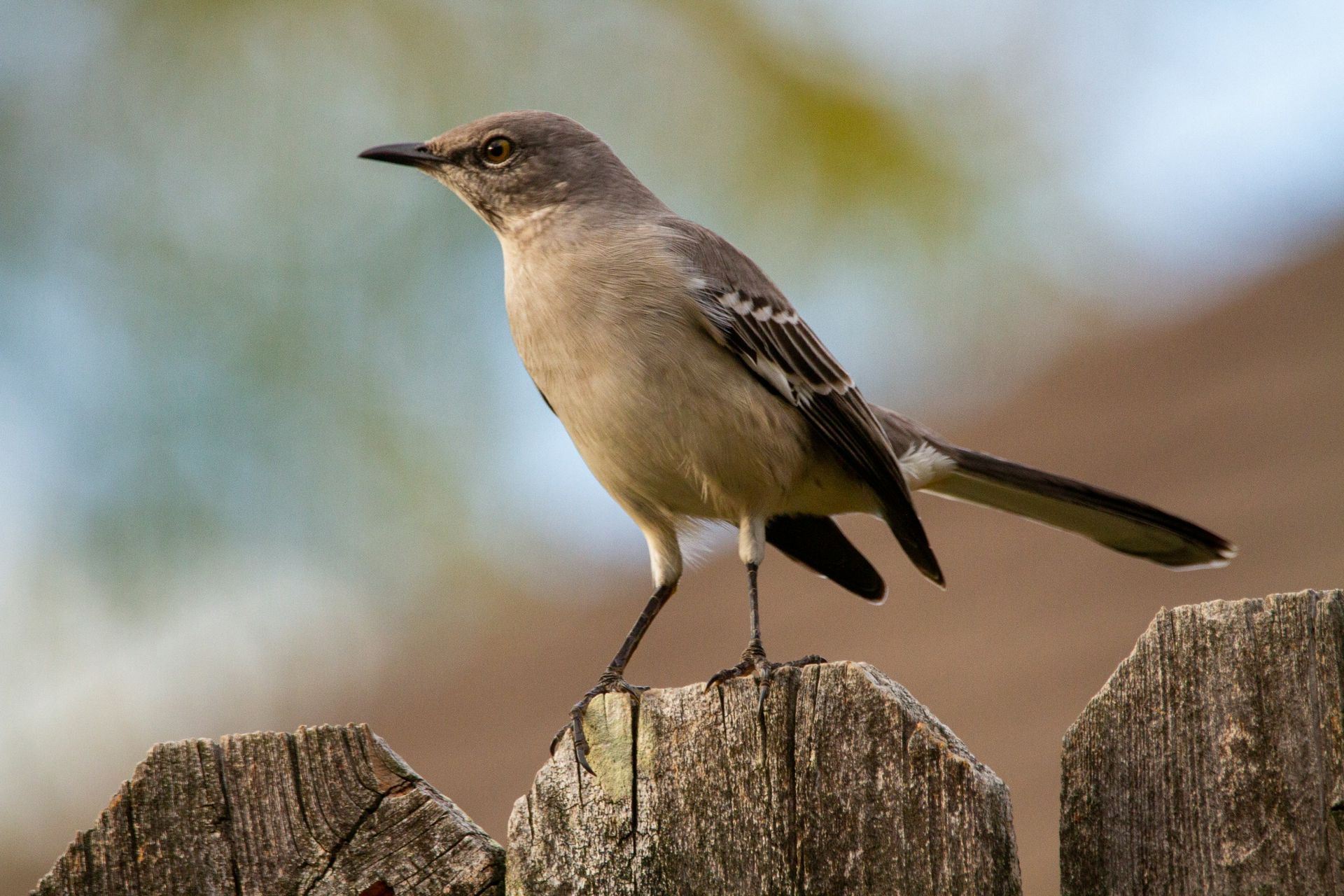Mockingbirds are medium-sized songbirds known for their remarkable vocal abilities and bold personalities. Found throughout North and Central America, these highly adaptable birds thrive in urban, suburban, and rural environments. Mockingbirds play a key role in ecosystems by controlling insect populations and dispersing seeds.
Mockingbirds typically measure 8-11 inches in length with a wingspan of 12-15 inches. They have slender bodies, long tails, and grayish plumage with white wing patches visible in flight. The Northern Mockingbird is the most widespread species in North America.
These birds are famous for their mimicry, capable of imitating the songs of dozens of other bird species as well as sounds like car alarms and barking dogs. Mockingbirds are highly territorial and will aggressively defend their nesting areas from intruders. During the breeding season, they build cup-shaped nests in shrubs or low trees and lay 2-6 eggs per clutch. Both parents participate in raising the chicks.
Natural predators include hawks, snakes, and domestic cats, while human-related threats such as habitat loss and window collisions pose additional risks. Despite these challenges, mockingbirds have adapted well to human-altered landscapes.

For your safety and the well-being of wildlife, please observe animals from a distance and avoid touching or disturbing them. If you encounter an animal that appears injured or in distress, contact a licensed wildlife rescue organization for guidance before intervening.
Found An Animal? Not sure how to help a wild animal in need? Learn when to step in, who to call, and how to help safely.
Did You Know?
- Mockingbirds can learn up to 200 different songs throughout their lifetime.
- Unlike many songbirds, they sing year-round, with males often performing at night during the breeding season.
- Mockingbirds have been observed mimicking human speech when raised in captivity.
- They are known for their aggressive behavior, frequently dive-bombing predators and even humans who approach their nests.
- Mockingbirds can recognize individual humans and respond differently based on past interactions.
- Some mockingbirds can imitate mechanical sounds, such as car alarms and cell phone ringtones.
- Northern Mockingbirds often sing a new song each spring, adding to their vast repertoire.
- They use body language, such as wing-flashing, to startle insects and make them easier to catch.
- Mockingbirds are considered symbols of joy and creativity in several cultures.
Problems Faced In The Wild
- Habitat Loss: Urban development reduces nesting and foraging areas.
- Window Collisions: Reflective glass poses a significant danger during flight.
- Predation: Free-roaming cats and other predators threaten mockingbird populations.
- Pesticide Use: Chemicals reduce insect populations and can poison birds indirectly.
- Climate Change: Altered weather patterns impact food availability and breeding success.
- Human Disturbance: Increased human activity near nesting sites can stress birds and reduce nesting success.
Tips For Cohabitation
- Plant Native Vegetation: Provide natural food sources and nesting spots.
- Avoid Pesticides: Use eco-friendly pest control to protect insect populations.
- Install Window Decals: Reduce window strikes by making glass more visible.
- Provide Bird Baths: Mockingbirds enjoy bathing and drinking from clean water sources.
- Keep Cats Indoors: Protect ground-foraging birds by reducing predation.
- E ducate Others: Share the importance of mockingbirds in controlling pests and supporting biodiversity.



